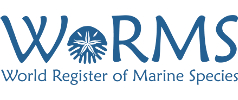
Marine Regions gazetteer
Marine Regions provides a standard, relational list of geographic names coupled with information and maps of the geographic locations of these features. The improves access to and clarity of geographic marine names such as seas, sandbanks, ridges, bays, boundaries, inlets, etc, and provides unambiguous information on the boundaries of marine biogeographic and managerial marine areas. Marine Regions gathers data on marine objects from various sources (authoritative databases, ecological classifications, etc) and where available, includes their geometries. In addition, conceptual information (e.g. the type of object) are added and organised in a hierarchy. Each object is assigned a unique ID (MRGID: the marine region geographic ID), which allows for unambiguous reference to the objects, effectively forming a unique and permanent vocabulary of marine region object names. Marine Regions is part of the LifeWatch project, and serves as a geographical basis for biodiversity databases, global fisheries research, and maritime applications. Marine Regions activities focus on two main outputs: its gazetteer and its geographical data products. The gazetteer provides a standard list of marine geographical place names and locations; its data products highlight particular geographical objects, the most popular one being the Marine Regions Maritime Boundaries. Marine regions also provides a number of webservices. The LDES service: all gazetter entries are exposed as Linked Data Event Streams (LDES), with one Event Stream page per hour. Each page contains a link to the next/previous page, and each MRGID URI is versioned by adding a 't' query parameter, indicating the time of the change.
stypes:SpatialService
ocean
geographic information systems